Sunset in the dacha
Oil on panel, 90 x 120 cm
Signed lower left: Karpoff
Ivan Karpoff is an artist of Russian origins who has shown a strong inclination towards the graphic arts since he was a child. Trained in his homeland, he moved to Milan in 1925 thanks to a scholarship that allowed him to graduate from the Academy of Fine Arts where he followed the courses of Ambrogio Alciati (1878-1929), a skilled portraitist who drew on the painting of the Scapigliato Tranquillo Cremona (1837-1878). Unlike his master, Karpoff, rather than portraits, deals with the painting of wooded, mountain and marine landscapes, often captured in moments of heavy snowfall and at sunset. Karpoff can be said to all intents and purposes to be an Italian artist, particularly from Lombardy. His painting, in fact, which does not fail to take views of the Milanese countryside, is nourished by the influences of Lombard painters such as Eugenio Gignous (1850-1906) and Leonardo Bazzaro (1853-1937). His paintings, therefore, are characterized by nineteenth-century impressionistic digusto brushstrokes, but are also distinguished by their great ability to deal with reflections and plays of light. In Karpoff's painting there is no shortage of nostalgia for the mother country, Russia, which manifests itself not only in the pictorial treatment, but also in that sense of solitude and suspension that hovers in the plains he investigated during the winter season covered in snow, which bring to mind Slavic romanticism. The painting in question here incorporates all these characteristics. The snowy landscape taken up at sunset is that of the Hungarian countryside, another place that often appears in Karpoff's repertoire.The work stands out for the beauty of the rendering of the pink and silvery reflections of the blanket of snow that covers and immobilizes the vegetation, for the intensity of the almost petrol green colour, which characterizes the body of water in the center of the canvas and for the quick touch of the brushstrokes with which Karpoff creates the trees, the small wooden cabin, the human figure and the horse. Despite the presence of living beings, there is no lack of that sense of suspension and solitude mentioned above which is actually fueled by the snow cover that immobilizes nature.






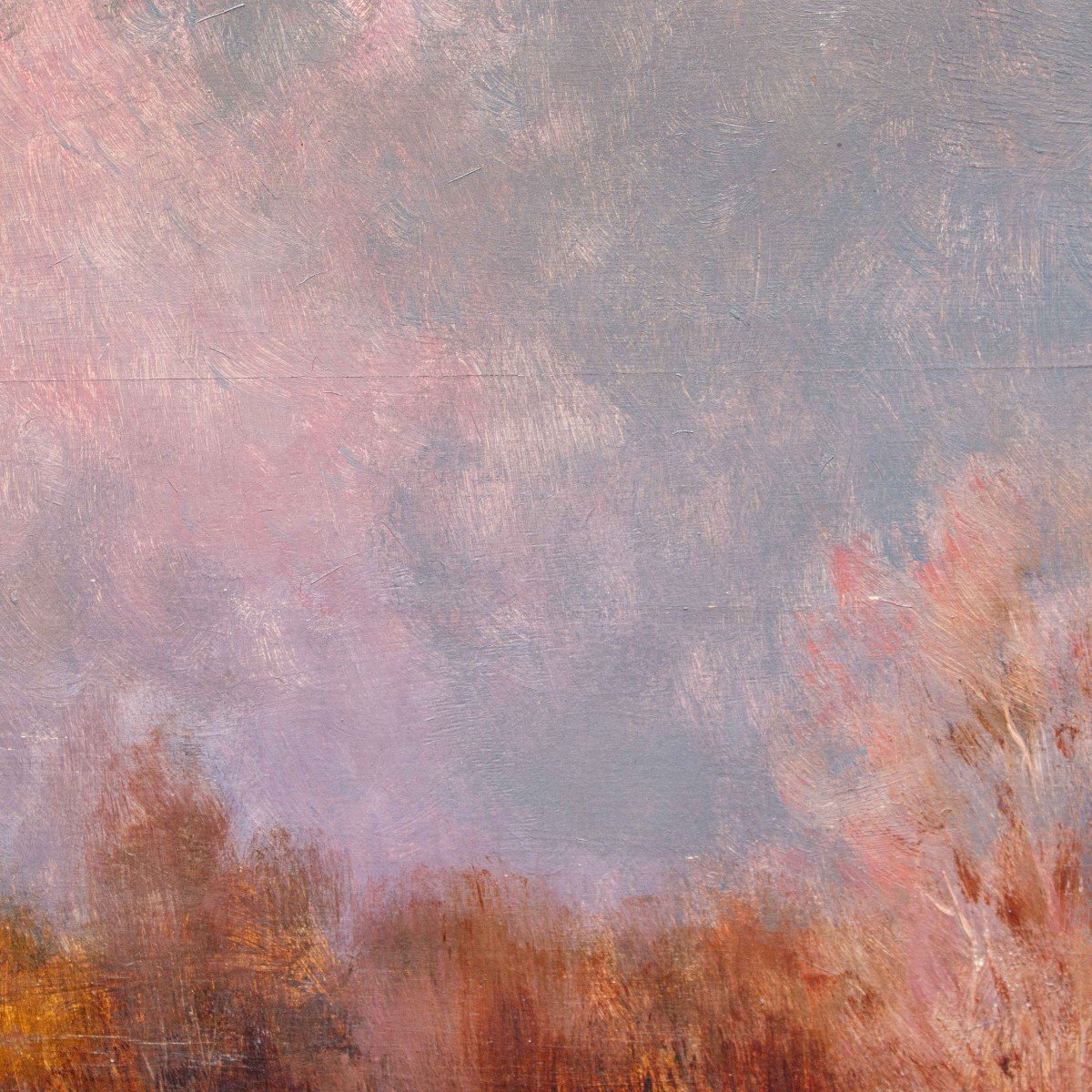
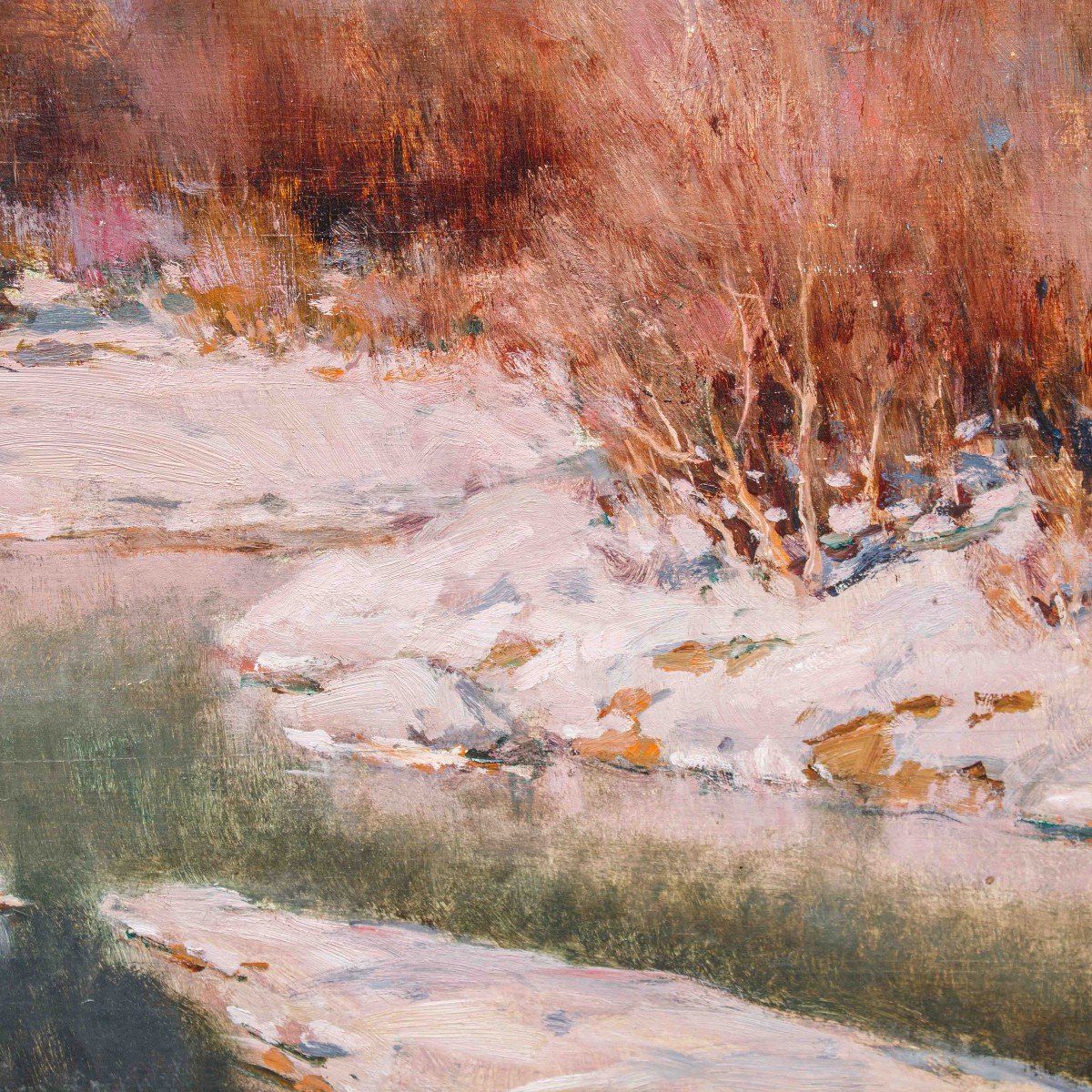


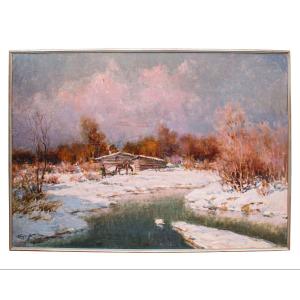










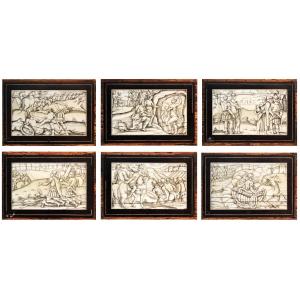




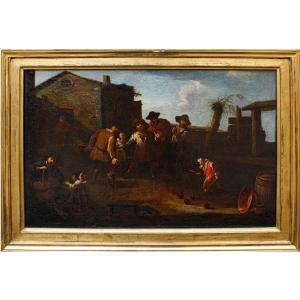




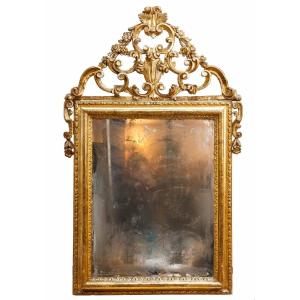




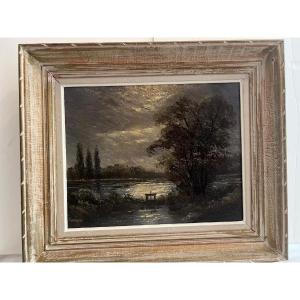
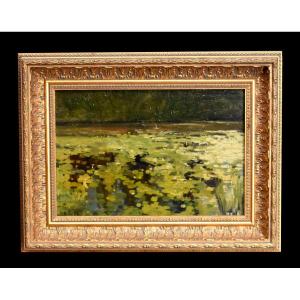
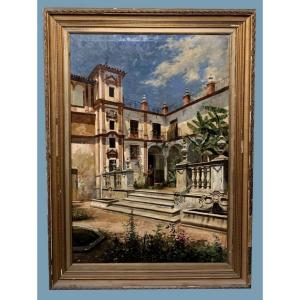



 Le Magazine de PROANTIC
Le Magazine de PROANTIC TRÉSORS Magazine
TRÉSORS Magazine Rivista Artiquariato
Rivista Artiquariato